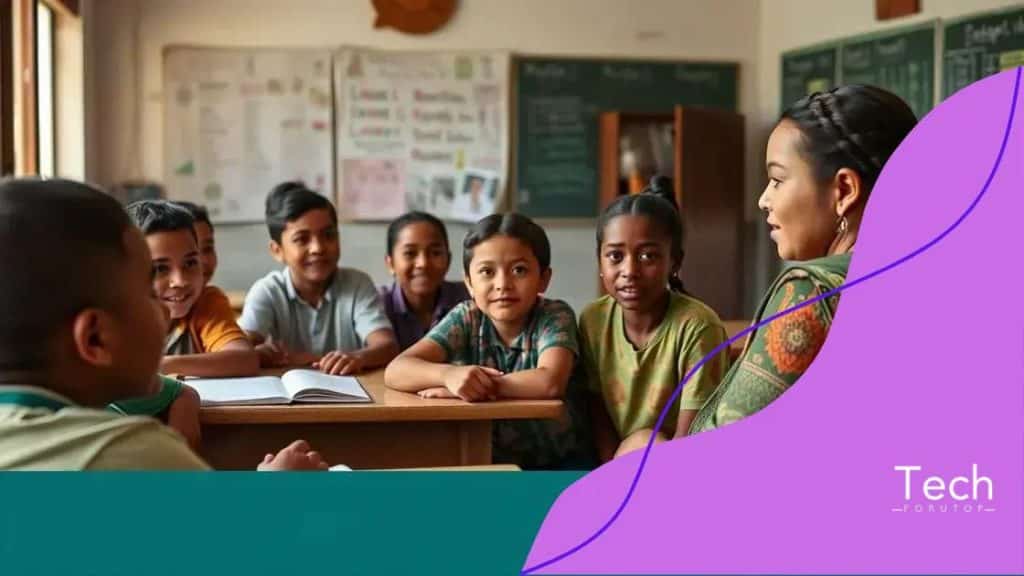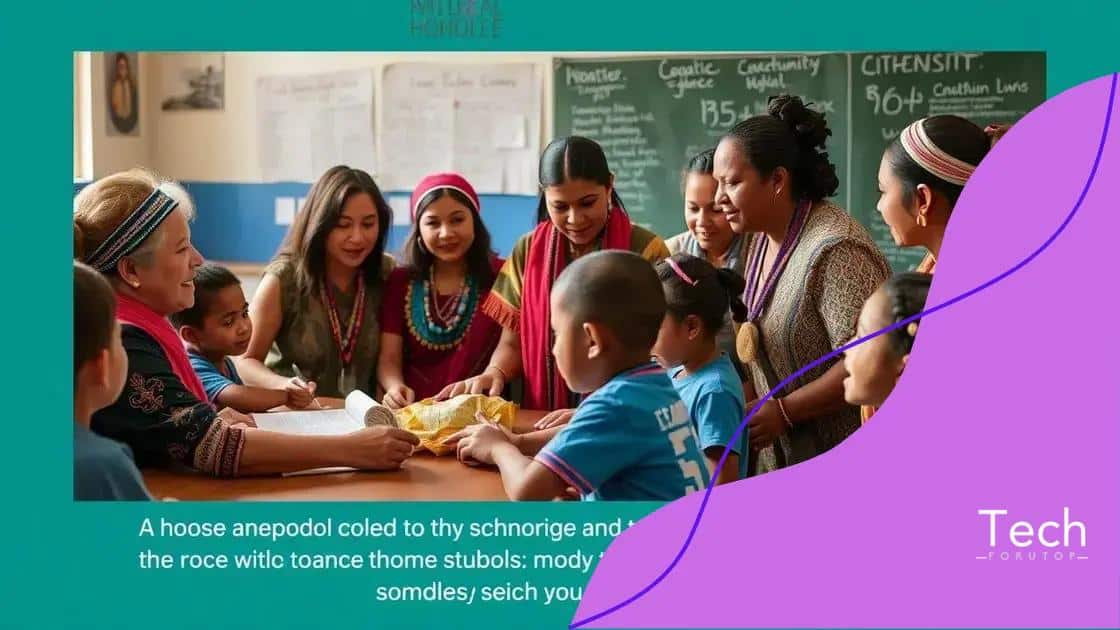Support for indigenous student education: a vital need

Support for indigenous student education is crucial for their academic success, requiring cultural understanding, community involvement, and effective strategies to address unique challenges and enhance learning experiences.
Support for indigenous student education is more than just a necessity; it’s a pathway to empowerment. Have you ever considered how education can transform communities? Let’s dive into the significant impact we can create together.
Understanding the unique challenges faced by indigenous students
Understanding the unique challenges faced by indigenous students is vital in ensuring their education thrives. Indigenous students often encounter a range of obstacles that can affect their academic journey.
Cultural Differences
Many indigenous students come from unique cultural backgrounds that differ significantly from mainstream education systems. This cultural disparity can create difficulties in communication and understanding.
Access to Resources
Access to educational resources is another major hurdle. Many indigenous communities lack basic resources such as technology, adequate school facilities, and learning materials.
- Limited internet access can hinder students’ ability to complete assignments.
- Funding issues for schools in indigenous areas can impact the quality of education.
- Language barriers may arise if students are not fluent in the language of instruction.
Another challenge is the societal perception and historical context surrounding indigenous education. Misunderstandings and stereotypes can lead to decreased expectations from educators and peers.
Furthermore, mental health issues may arise due to systemic pressures and a lack of support. Recognizing these obstacles is the first step toward creating a more effective support system tailored for indigenous students.
Effective strategies for supporting indigenous learners
Effective strategies for supporting indigenous learners are essential to their success in education. These strategies help create an environment where indigenous students feel valued and understood.
Creating Culturally Relevant Curriculum
Incorporating elements of indigenous culture into the curriculum can significantly enhance engagement. This approach fosters a sense of belonging and relevance among students.
Building Strong Relationships
Establishing strong relationships between educators and indigenous learners is crucial. Educators should show respect for the students’ cultures and backgrounds. Listening to students and valuing their input creates a positive learning atmosphere.
- Mentorship programs can help students navigate their educational journey.
- Community involvement fosters support and encouragement.
- Open communication allows students to express their needs and challenges.
Providing access to resources is important, too. Schools should ensure that indigenous students have the necessary tools to succeed. This may include technology, tutoring, and additional learning materials.
Moreover, incorporating traditional knowledge into lessons can enrich the learning experience. This approach acknowledges the value of indigenous perspectives and can enhance academic success.
Community involvement in indigenous education initiatives

Community involvement in indigenous education initiatives plays a crucial role in the success of indigenous students. When communities engage in education, it creates a supportive network that promotes learning and personal growth.
Building Partnerships
Establishing strong partnerships between schools and local indigenous communities is key. These partnerships can lead to a shared understanding of the students’ backgrounds and needs.
Promoting Cultural Activities
Involving community members in cultural activities can enhance educational experiences. This helps students to connect with their heritage, promoting a sense of identity and pride.
- Workshops featuring traditional skills and knowledge can enrich the curriculum.
- Guest speakers from the community can share valuable perspectives.
- Collaboration on school events can foster a sense of belonging for students.
Additionally, providing volunteer opportunities encourages community members to invest in education. Volunteers can assist in classrooms or mentor students, offering both support and encouragement.
Furthermore, engaging with parents is essential for creating a robust educational environment. Schools should outreach to parents, helping them understand how to support their children’s learning.
The role of technology in enhancing learning for indigenous students
The role of technology in enhancing learning for indigenous students is becoming increasingly important. By integrating technology into education, we can break down barriers and create more inclusive learning environments.
Access to Resources
Technology provides access to a wide range of educational resources. Indigenous students can benefit from online learning platforms, digital libraries, and educational apps that cater to their needs.
Engaging Learning Tools
Using engaging learning tools can make education more interactive. For instance, interactive whiteboards and tablets make lessons more dynamic and engaging.
- Multimedia presentations can enhance understanding of complex topics.
- Online collaboration tools allow students to work together, regardless of location.
- Virtual field trips can provide experiential learning opportunities that may not be accessible otherwise.
Moreover, technology can help in preserving indigenous languages and cultures. Language learning apps allow students to engage with their heritage and learn their traditional languages effectively.
Additionally, training teachers to use technology effectively is essential. When teachers are skilled in using digital tools, they can provide a richer learning experience for their students.
Success stories: Positive impacts of support programs
Success stories of support programs demonstrate the positive impacts they have on indigenous students. Through various initiatives, these programs have helped learners to thrive academically and socially.
Academic Improvement
Many students have shown remarkable improvement in their grades and overall academic performance due to targeted support. Tailored tutoring programs help identify the unique needs of indigenous learners and provide the assistance they require.
Increased Engagement
Support programs often lead to increased student engagement. When students feel supported and valued, they are more likely to participate actively in their education.
- Programs that incorporate cultural elements can boost confidence.
- Extracurricular activities connect students to their community.
- Family involvement enhances motivation and support.
Moreover, success stories highlight how mentoring relationships can positively affect students. Mentors provide guidance, encouragement, and a sense of belonging that is crucial for personal development.
For instance, several indigenous students have shared how mentorship programs helped them overcome challenges and inspired them to pursue higher education. Sharing these success stories can motivate others and showcase the effectiveness of support initiatives.
FAQ – Frequently Asked Questions about Support for Indigenous Student Education
What are the unique challenges faced by indigenous students?
Indigenous students often encounter cultural differences, limited access to resources, and societal perceptions that can impact their educational experience.
How can technology enhance learning for indigenous students?
Technology provides access to educational resources and engaging tools that can make learning more interactive and relevant for indigenous students.
Why is community involvement crucial in indigenous education?
Community involvement creates a supportive environment for students, fosters connections, and enhances motivation and academic performance.
What are some successful strategies for supporting indigenous learners?
Successful strategies include creating culturally relevant curricula, building strong relationships, and implementing mentorship programs to guide students.





